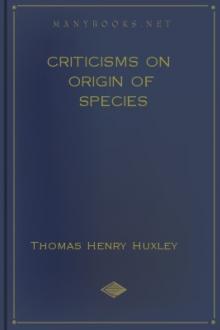Kudzu Review Summer Solstice 2012 Edition by Madison Percy Jones IV (Editor), Arthur Wilke (Editor), Robin Ward (Editor) (easy to read books for adults list TXT) 📖

Book online «Kudzu Review Summer Solstice 2012 Edition by Madison Percy Jones IV (Editor), Arthur Wilke (Editor), Robin Ward (Editor) (easy to read books for adults list TXT) 📖». Author Madison Percy Jones IV (Editor), Arthur Wilke (Editor), Robin Ward (Editor)
That the place for human effluent
to be jettisoned into porcelain chutes
should be signified by the emblem
of a standing human seems odd.
This stance with arms stretched out
away from the action,
is not the posture most men adopt
to urinate, hands gun-slinger wide.
And unlike these signs,
ladies, I’m told,
prefer not to stand at all,
at least not with legs pressed together so tight.
Out of context the logo could well confuse,
yet as a symbol for our disposable age,
that the sign of a standing man and woman
should signify the detritus left behind
is fitting, as future races try
to make sense of our sullied earth
picking through the toxic waste
for a single remnant of worth.
On August 6, 1945, the ecological space of Hiroshima changed drastically. No longer was the space defined by the urban environment of the city, but rather the atomic bomb opened up a new, vast space for plant life to thrive. One would think that the radiation would destroy the plant life around the port city of Hiroshima, yet there are still trees that produce new buds even though they were affected by the bomb. Located 1.3 kilometers from the hypocenter, the now dubbed “phoenix trees,” also known as Chinese Parasol Trees, stand as testament that plant life could adapt to the harsh conditions the bomb created (“24 Phoenix Trees”). Other trees, too, survived the atomic bomb and flourished. In “Hibaku Trees of Hiroshima,” Peter Del Tredici speaks of photographs of bomb-stricken trees taken by photographer Hiromi Tsuchida, whose work between 1976 and 1983 served as a “systematic and measured chronicle of the aftermath of the atomic apocalypse” (25). Tredici states, “Looking at Tsuchida’s photographs of trees, the sense of tragedy gives way to a sense of wonder at the indomitable vitality of life. These are the true survivors, plants that can withstand the worst humanity has to offer” (Tredici 25-26). However, Tredici and the visitors to the Hiroshima Peace Memorial are not the only ones to speculate over the phenomenon of atomic plant life.
In Masuji Ibuse’s Black Rain, Shigematsu, too, experiences an uncanny moment in light of seeing plant life thriving under the bleak conditions of post-bomb Hiroshima. Shigematsu must read the land in order to figure out what is happening to the world around him. The newly grown shoots, rather than the people, provide the clues that this bomb is not the regular conventional weapon, as the atomic bomb not only killed thousands of people but also affected the ecosystem. Shigematsu’s encounter with the shoots is one that can easily be explained by science, but with his convergence, Shigematsu does not even know what to call the experience attached to the signified new land. The uncanny shoots show the endurance of the natural world over the man-made and inform that even in this apocalyptic environment looking to the land promises an answer.
Shigematsu records in his journal:
Along this road, too, I could see, between the broken stone walls and the ornamental rocks where people’s house had been, wood sorrel and vetch drooping under the weight of new shoots that had sprouted too quickly for them to support. I wondered whether the shock of the raid could have affected the cell structure of plants in the same way as with human beings (Ibuse 190).
This encounter is the first instance where Shigematsu looks at the plant life itself rather than the rubble around it. He approaches this experience in a scientific manner, wondering if the bomb affects the plants’ cell structure; however, the use of the adverbs “too quickly” and “unusually” lend the uncanny feeling that Shigematsu suffers because he cannot name the spectacle that is occurring. All of his musings over the situation fall short of satisfying his curiosity: “But I had never heard anyone say that a sudden shock from light or sound or heat could set plants growing unusually fast” (Ibuse 190).
Research from the Chernobyl incident helps shed light on how plant life grows when exposed to high dosages of radiation—a helpful tool in assessing the ecology of Hiroshima. In The Legacy of Chernobyl, Zhores A. Medvedev states, “The Soviet press reported rather casually that the pine trees around the Chernobyl plant died within a few days after the accident. Later it was acknowledged that 400 hectares of pine forest had died. Birch, oak and other leafy species survived the first year” (89). Medvedev’s work does not delve into the reasons why the deciduous trees survived longer than the pine trees, but it might be due to weather conditions and the surface area of the leaves. Shigematsu notices that the shoots that do persist are deciduous. He does not comment on whether or not there are pine varieties of trees still existing during his roaming of Hiroshima, but the types of plants he does encounter like the sorrel, vetch, and plantain have leaves instead of needles. H. Nishita, E.M. Romney, and K.H. Larson state, “Aside from the effects of plant surface characteristics and fallout particle size, the extent of fallout retention on the plant surfaces relative to that on the soil surface is influenced largely by weather conditions. Particles may be dislodged by wind or rain” (61). The surface area of the plant might explain why the deciduous variety tended to survive in both Chernobyl and Hiroshima. It is through this affected flora that Shigematsu has to read that the bomb is not an ordinary one; rather, it is one that can give life while selectively taking others.
Shigematsu constantly sees the masses of corpses lining the streets of Hiroshima, but these bodies have merely taken on an inanimate status to him due to the bomb’s unselective process concerning human life. The shoots, however, arrest his gaze because in the midst of all the death there is life. He states, “The bomb seemed to have encouraged the growth of plants and flies at the same time that it put a stop to human life” (Ibuse 190-191). Shigematsu is not privileging one or the other here; he is just expressing his confusion. Why should the bomb take one life and not the other? Why should it “encourage the growth” of plants (Ibuse 191)? The bomb has a dualized nature in that not only does it create “natural” phenomenon like rain and plant growth, but also it makes these processes perverse. It is this very perverseness that makes Shigematsu question the nature of the bomb, but it is the plant life that gives an answer—albeit a vague one. The bomb can ravage, maim, and kill, but it can also produce life at an abrupt pace.
The plantain tree that Shigematsu notices rapidly reproduces a new bud even though the bomb tore its branches asunder: “Yesterday, I had seen a new shoot a foot and a half long on a plantain tree in what had been the back garden of a noodle shop. The original stem had been snapped off by the blast and had disappeared without a trace, but a new shoot, encased in a sheath like bamboo, was already growing in its place” (Ibuse 191). Just as with the sorrel and vetch, the plantain is a deciduous with huge leaves, but the growth of the shoot also has to do with what was damaged on the tree—research on nuclear fallout points that aboveground plant parts receive more damage than the underground portions. M.J. Buckovac, S.H. Wittwer, and H.B. Tukey assert, “Aboveground plant parts function not only as organs for the exchange of gases and synthesis and storage of metabolites, but also in the absorption and secretion of substances from and to the ambient environment” (82). In the 1981 publication Hiroshima and Nagasaki: The Physical, Medical, and Social Effects of the Atomic Bombings the research shows:
Damage to plants was found only in the portions exposed aboveground, and portions underground were not directly damaged. Consequently, the root and the underground stalk put forth new buds even those whose aboveground portion was completely burned […] Broad-leaved trees in general regenerated actively […] The poorly resistant herbs were needle-leafed trees such as Japanese cedar [Cryptomeria japonica] and pine” (Qtd in Tredici 26-27).
This information is reminiscent of the Chinese Parasol Trees, which produce large foliage “giving the tree a tropical appearance” and are “able to naturalize [themselves] fairly easily if given the chance” (“Firmiana simplex-Chinese Parasol Tree”). The Hiroshima Peace Memorial writes, “Because no intervening object stood in the direction of the hypocenter, they took the full force of the heat ray and blast, losing all of their branches and leaves. The sides of the trunks toward the hypocenter was [sic] burned and hollowed out. Although the trees appeared to be dead, their branches put out buds the following spring” (“24 Phoenix Trees”). And like the Chinese Parasol trees, the plantain tree also exhibits the signs that though its leaves and branches were destroyed in the blast, the radiation did not wholly damage the root system.
Shigematsu’s uncanny moment becomes one filled with questions and amazement because there is not a name for the phenomenon of the atomic bomb. There is no signifier for the signified. Only towards the end of the novel are we presented with the name of the bomb: “‘An “atomic bomb” […] ‘It gives off a terrific radiation […] They say nothing’ll grow in Hiroshima or Nagasaki for another seventy-five years’” (Ibuse 282). The plants defy the very notion of ecological death caused by the bomb, even though the anxiety around this notion is great once the people of Hiroshima learn the name of it. Shigematsu reminisces and thinks, “Hadn’t I seen weeds running riot all over the ruins?” (Ibuse 282). The weeds do run riot; they overtake the newly formed open space around them.
Even though Shigematsu cannot explain the phenomenon happening around him, he reads the landscape for answers. In this moment, Shigematsu is entering upon an interrelated conversation with the flourishing blooms of the sorrel, the vetch, and the plantain. They might not be able to tell him the whole answer, but they can tell him that this bomb goes beyond what man should. The bomb touches everything, and it also genetically alters. The radiation from the atomic bomb distorted the landscape that it touched, and it affected the plant and human life that it fell upon permanently. But even in the





Comments (0)